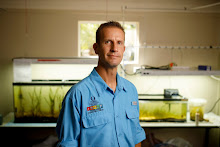Two, hard-hitting weather/climate graphs were recently shared on social media by WFLA News Channel 8 (Tampa) meteorologist Jeff Beradelli. They are impactful because they show how even a seemingly small change in average global temperature, like the +1.5 degree Celsius we've had since the pre-industrial era, can lead to big increases in the number of days of oppressively hot conditions.
https://www.facebook.com/JeffBerardelli
I've put the images below, along with Beradelli's original text of the post:

 Native Floridians often say... "it didn't used to be this hot!"
Native Floridians often say... "it didn't used to be this hot!"
They are right. 90 degree days have doubled here in Tampa and heat index days above 100 have increased by 4X since around 1970.
It's not coincidence, it's climate change!
The extra heat is driven by the build up of heat-trapping greenhouse gases and also the increase in the urban environment (urban heat island). Warmer air also means the air now has a little more humidity and dewpoints have increased. The result is more oppressive and longer Florida summers.
As some commenters have mentioned this is not an exact apples to apples comparison... we have only been through 4 full summer in the 2020s... and of course it may temporarily cool some in the coming year/s. But truth be told, I don't think it will cool by much.
The post created quite a stir on social media. Commenter perspectives were largely polarized, as one would expect in today's hyper-partisan environment. There was agreement/concern on one side and defensiveness/denial on another side. It wasn't TOTALLY polarized, though. I think I saw more than usual agreement mixed in with the denial. It IS hot in Florida, and getting hotter year by year, and people are recognizing that. One of the mixed perspectives I saw was basically, "
I agree that it's getting hotter, but I think it's just because of urban sprawl and the heat island effect, not because of CO2 pollution and global warming."
The urban heat island effect is obvious to anyone who has felt the drastic temperature difference between a sun-baked parking lot and a cool park/forest with lots of shade trees. (See picture below of a beautifully cool "tree tunnel" on Edisto Island, South Carolina that I took on a recent vacation there.) In addition to cooling via shade, trees cool the landscape by
evapotranspiration. In Florida there is populist alarm about our meteoric population growth and urban/suburban sprawl - It's something both
basic liberals and country conservatives seem opposed to - So we are very ready to recognize and rage against the urban heat island effect. That good! Hopefully it will get us to preserve and plant more trees, stop mowing and draining wetlands, and limit sprawl. (Only our rich leaders [who are almost all financially aligned with development interests] seem to welcome the sprawl - We need to vote them out.)

The global climate change thing is a tougher pill for some people to swallow than the urban heat island effect, even though it is also 100% real. Anthropogenic climate change is indicated by mountains of evidence including steadily increasing CO2 and methane concentrations in the atmosphere, increasing global temperatures (even when the urban heat island effect, natural cycles, and other influences are carefully factored out), and increasing rates of glacier retreat and sea level rise. Why is it tougher for people to accept global climate change than the urban heat island effect? Well, it doesn't help that well-funded fossil fuel industry propaganda has been trying to cast doubt on the science for several decades. And the other thing is that compared to the urban heat island effect, global climate change is harder to directly feel. You can't step in and out of a CO2 polluted earth like you can step in and out of a tree shadow to feel the temperature difference, so you have to understand the science or at least trust the data and analyses by many groups of independent scientists around the world that all converge on the reality of climate change and its causes.
Anyway, hopefully more people will wake up to global CO2 pollution being a real contributor to local warming. In the meantime, actions like planting trees and limiting urban sprawl should be a win for both skeptics and believers, because trees help through both the local shade and evapotranspiration effect and CO2 sequestration, which makes a small but meaningful contribution to reducing global warming.

























